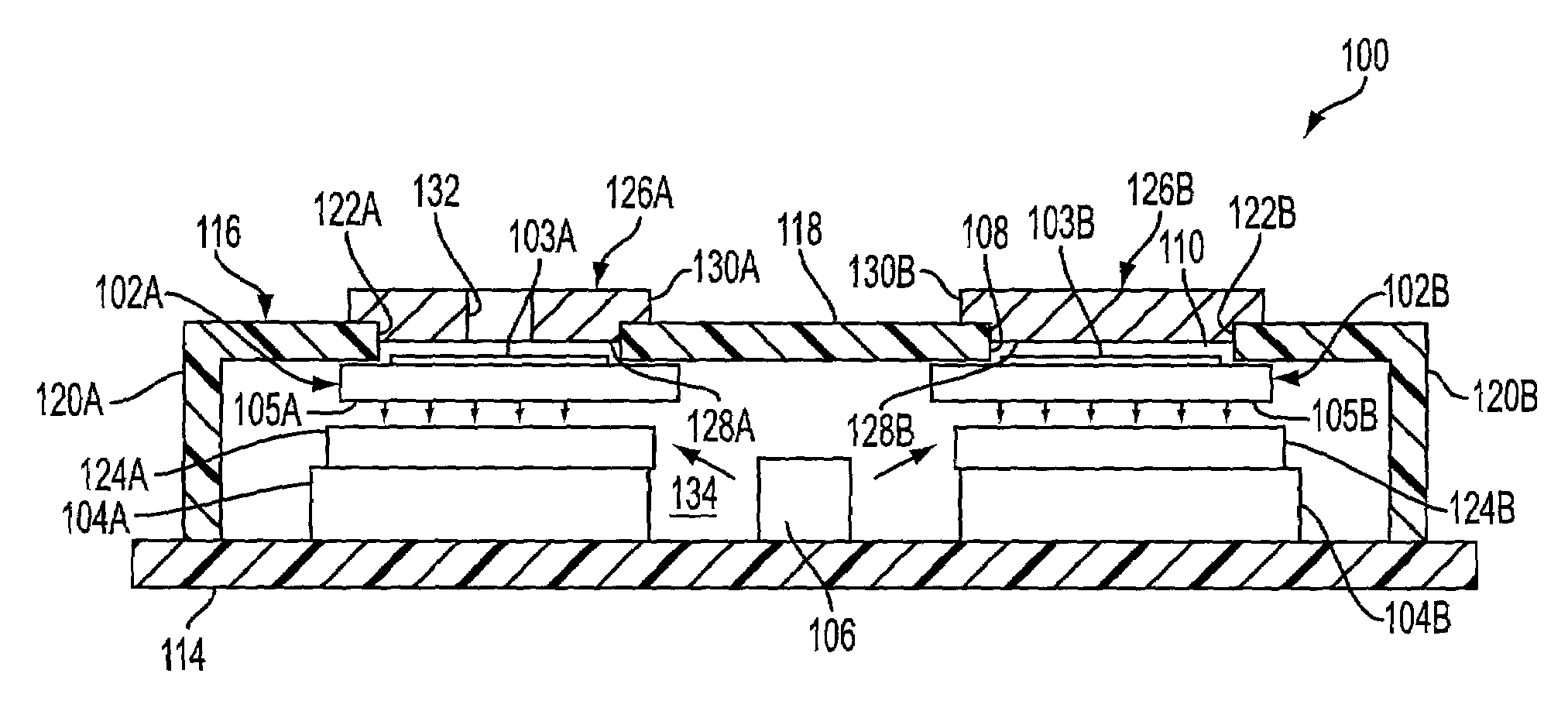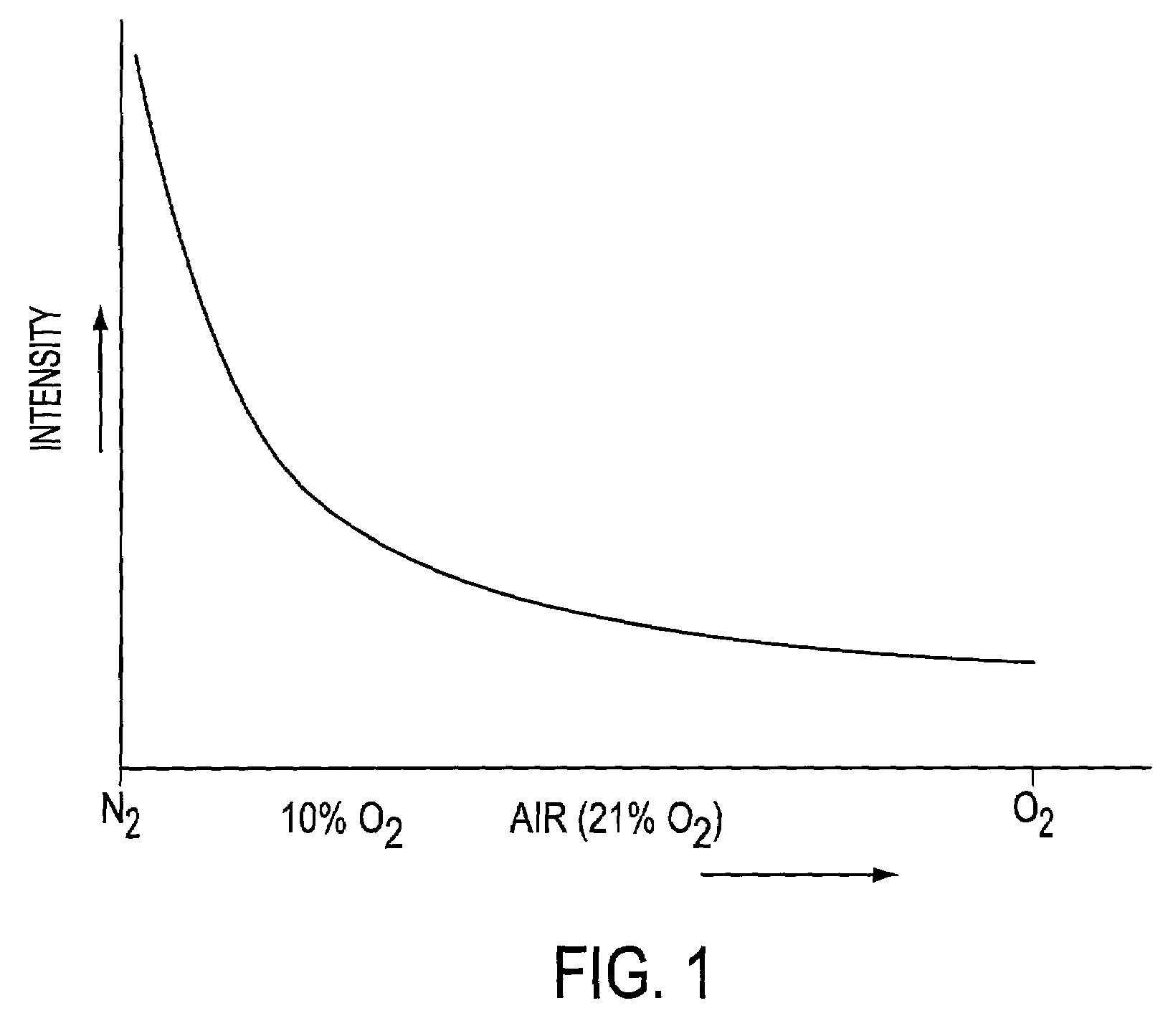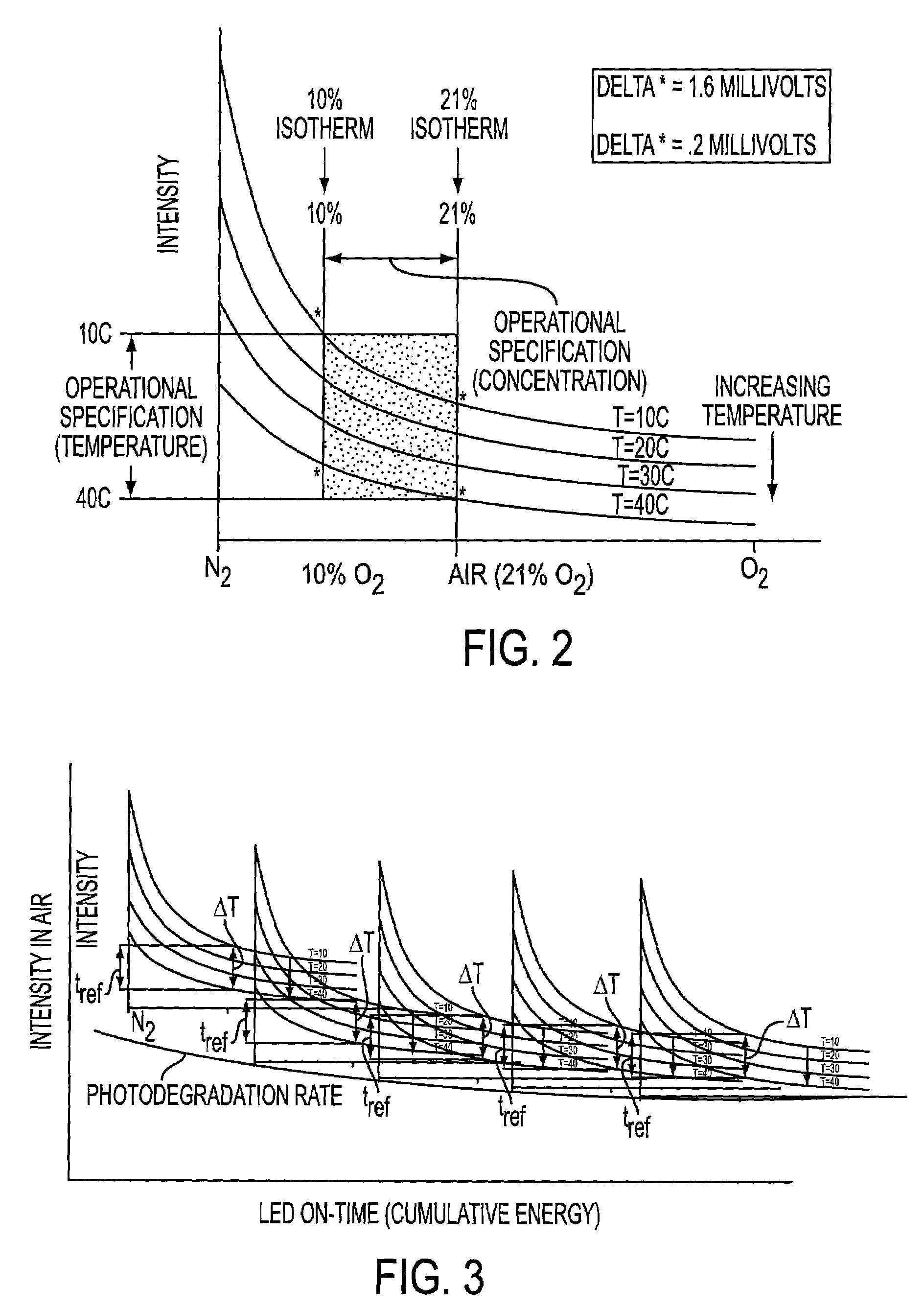Electro-optical sensing device with reference channel
a technology of optical sensing and reference channels, applied in the direction of fluorescence/phosphorescence, instruments, material analysis, etc., can solve the problems of inability to know which of the plots to use, covalent and permanent alteration of the indicator molecular structure, and difficult measurement of the first variable (i.e., analyte concentration)
- Summary
- Abstract
- Description
- Claims
- Application Information
AI Technical Summary
Benefits of technology
Problems solved by technology
Method used
Image
Examples
Embodiment Construction
[0044]An electro-optical sensing device 100 according to the present invention is illustrated in FIGS. 6 and 7. Sensing device 100 generally includes a signal channel with an indicator element 102A and a photosensitive element 104A, a reference channel with an indicator element 102B and a photosensitive element 104B, and a radiation source 106 providing excitation radiation for both the signal and reference channels. The indicator elements 102A and 102B each include an indicator layer or membrane containing indicator molecules having one or more optical characteristics that are affected by the local presence of an analyte. The indicator membrane 103A of the signal channel is exposed to an exterior of the device and is thus responsive to the local presence of an analyte in the external environment or medium. The indicator membrane 103B of the reference channel is covered and is thus not responsive to the local presence of an analyte in the external environment. Since the membranes ar...
PUM
| Property | Measurement | Unit |
|---|---|---|
| reflectance | aaaaa | aaaaa |
| photosensitive | aaaaa | aaaaa |
| optical | aaaaa | aaaaa |
Abstract
Description
Claims
Application Information
 Login to View More
Login to View More - R&D
- Intellectual Property
- Life Sciences
- Materials
- Tech Scout
- Unparalleled Data Quality
- Higher Quality Content
- 60% Fewer Hallucinations
Browse by: Latest US Patents, China's latest patents, Technical Efficacy Thesaurus, Application Domain, Technology Topic, Popular Technical Reports.
© 2025 PatSnap. All rights reserved.Legal|Privacy policy|Modern Slavery Act Transparency Statement|Sitemap|About US| Contact US: help@patsnap.com



